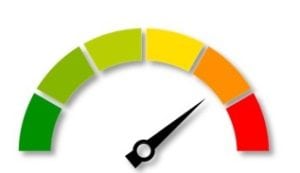PMP Certification Training
- 86k Enrolled Learners
- Weekend/Weekday
- Live Class
Agile enables to decrease the effort and amount of planning that is needed to commence projects and thus focuses on the creation of valuable products and services that can be offered to customers and users quickly. On the contrary, organizations that are not familiar with agile or are newly introduced to it are often clueless about how to make the output of their teams predictable and consistent. We will understand the following topics in this Velocity in Agile Article:
To measure the progress of your agile teams, Velocity is a great metric tool that is applied. In layman’s language, velocity refers to the amount of work done by the team in a given amount of time. There are various parameters of measuring velocity for a team.
It can be measured in the hours taken by an individual, a number of tasks or story points. It depends on whatever unit of measurement you use to calculate your work.
In KanBan, a constant set of tasks are dealt with by the teams wherein all the tasks are of the same size and pose the same amount of burden. In this case, velocity can be measured by the number of tasks completed in a single day. By calculating the daily velocities over the span of a week’s time and arriving at its average, you can then predict and estimate the amount of work the team can tackle over a longer period of time.
On the other hand, the velocity of a Scrum team refers to the number of story points of person-hours that are completed in a sprint.
Using Velocity gives great insight into a team’s development and progress as it is used to measure productivity and make predictions as well for the team to perform better. On the contrary, it does not contain all the necessary relevant information which is required to make good and reliable predictions.
For this purpose, Scrum masters, Release Managers, and Product Owners need to brainstorm and focus on details. Velocity as a tool proves to be beneficial when it is used with stable and highly experienced teams who have been working together for long and have been estimating together as well. The velocity will prove to be less efficient and meaningful if the team members keep changing frequently or are absent for long.
Another case in which the velocity can suffer is if the product backlog is missing user stories and this is most likely to happen over a long period of time. One of the most promising benefits of agile is that it gives you the skill and ability to respond quickly to changes in the customer’s needs and incorporate these alterations into your product in a relatively less frame of time.
It proves to be a great advantage when it comes to planning releases in detail efficiently, well ahead of time. It is important to keep in mind that velocity can be measured through a time frame as well (iterations, sprints or weeks). But, once you decide how to measure the velocity you should continue measuring it the same way as you go forward in your project. For example, to measure velocity in agile usually, the number of user points in a sprint is measured by the Scrum teams.
After this is measured on the basis of a few sprints, the team is able to predict how many user points should be completed per sprint. Then the team can arrive at an estimation of how many sprints they would require to complete a given project and thus be able to measure the efficiency of the team as well along the way.
You cannot rely on the numbers provided by agile velocity. Rather it is the trends that will ultimately measure and facilitate efficiency. Thus, velocity cannot be used and relied on as an efficiency goal. It is important to understand what this means.
When the team witnesses velocity numbers decreasing, they wonder and focus on what can be done to get the numbers higher or back up to where they were. This poses great pressure on developers to achieve a specific velocity goal. Instead, if your velocity numbers are spiraling downwards, the team should dig deeper and analyze the possible inefficiencies that could be causing the decline in the numbers.

In order to yield a more accurate timeline and budget, you could aim for a slightly lower velocity number going ahead in the project. At the same time, a rapid increase in velocity numbers should not be avoided as it could indicate that the team is going too fast and is not maintaining as well as producing the desired quality of work.
The safest and best way to use velocity in agile is to be realistic and keep the goal simple in order to identify inefficiencies in the project. Hence, the ultimate objective of velocity is to be able to achieve efficiency while maintaining quality.
Along with possibly increasing the overall ability and capacity of the team, velocity enables the development team to arrive at an estimate of how many product backlogs they may forecast for the current sprint. The product owner can get an understanding of the speed at which a team can work through the backlog and he can revise the predicted delivery time based on the velocity of the development team.


Velocity as a metric is highly appreciated as the Scrum team can understand their own progress, their strengths as well as their shortcomings in order to perform better in the coming sprints.
On the other hand, velocity should not be used as a measure to analyze the team’s performance. It is vital for team transparency to exist for smooth functioning and delivery of the product.
To conclude, velocity is not an end goal but as a result. It should be used for continuous improvement of the team and not for any other purpose. The moment this metric is used for another purpose, the teams will cease to reap its benefits and will ultimately result in losing focus on their agility goals.
With this, we come to an end of this Velocity in Agile Article. I hope you got an understanding of the concepts of Velocity, and how useful it is in Agile, Scrum and Kanban.
The Certified Scrum Master Training at Edureka provides a comprehensive overview of the Scrum framework for agile project management and will prepare you to become a certified Scrum Master. You’ll learn the fundamentals of Scrum such as the Scrum life cycle, how to organise a Scrum team and set up a project, and how to implement a Scrum, from releases and sprints to enterprise transformation. This two-day classroom training will open new career opportunities for you in multiple industry sectors.
 Thank you for registering Join Edureka Meetup community for 100+ Free Webinars each month JOIN MEETUP GROUP
Thank you for registering Join Edureka Meetup community for 100+ Free Webinars each month JOIN MEETUP GROUPedureka.co